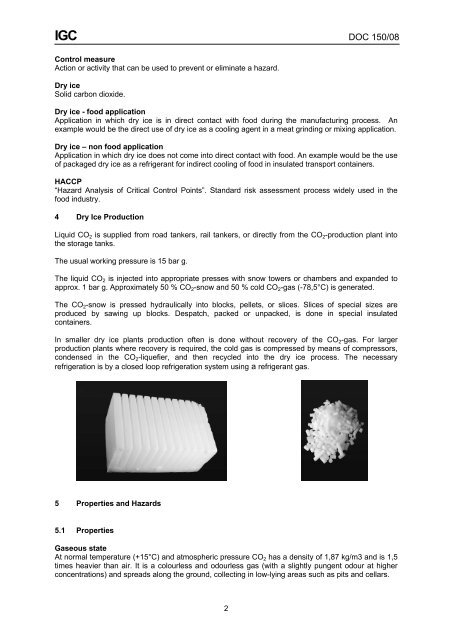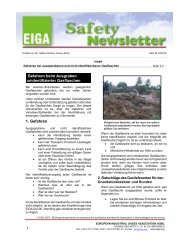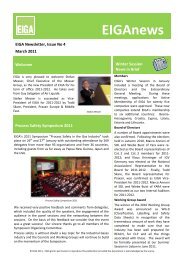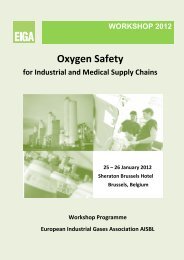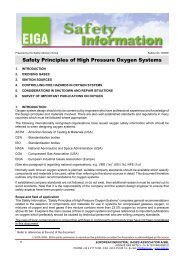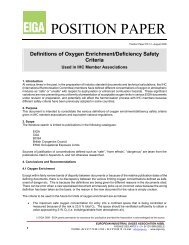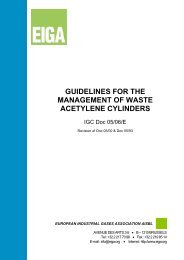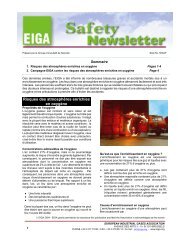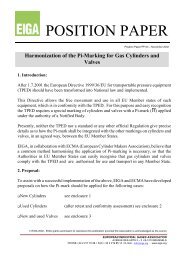CODE OF PRACTICE DRY ICE - eiga
CODE OF PRACTICE DRY ICE - eiga
CODE OF PRACTICE DRY ICE - eiga
Create successful ePaper yourself
Turn your PDF publications into a flip-book with our unique Google optimized e-Paper software.
IGC DOC 150/08<br />
Control measure<br />
Action or activity that can be used to prevent or eliminate a hazard.<br />
Dry ice<br />
Solid carbon dioxide.<br />
Dry ice - food application<br />
Application in which dry ice is in direct contact with food during the manufacturing process. An<br />
example would be the direct use of dry ice as a cooling agent in a meat grinding or mixing application.<br />
Dry ice – non food application<br />
Application in which dry ice does not come into direct contact with food. An example would be the use<br />
of packaged dry ice as a refrigerant for indirect cooling of food in insulated transport containers.<br />
HACCP<br />
“Hazard Analysis of Critical Control Points”. Standard risk assessment process widely used in the<br />
food industry.<br />
4 Dry Ice Production<br />
Liquid CO2 is supplied from road tankers, rail tankers, or directly from the CO2-production plant into<br />
the storage tanks.<br />
The usual working pressure is 15 bar g.<br />
The liquid CO2 is injected into appropriate presses with snow towers or chambers and expanded to<br />
approx. 1 bar g. Approximately 50 % CO2-snow and 50 % cold CO2-gas (-78,5°C) is generated.<br />
The CO2-snow is pressed hydraulically into blocks, pellets, or slices. Slices of special sizes are<br />
produced by sawing up blocks. Despatch, packed or unpacked, is done in special insulated<br />
containers.<br />
In smaller dry ice plants production often is done without recovery of the CO2-gas. For larger<br />
production plants where recovery is required, the cold gas is compressed by means of compressors,<br />
condensed in the CO2-liquefier, and then recycled into the dry ice process. The necessary<br />
refrigeration is by a closed loop refrigeration system using a refrigerant gas.<br />
5 Properties and Hazards<br />
5.1 Properties<br />
Gaseous state<br />
At normal temperature (+15°C) and atmospheric pressure CO2 has a density of 1,87 kg/m3 and is 1,5<br />
times heavier than air. It is a colourless and odourless gas (with a slightly pungent odour at higher<br />
concentrations) and spreads along the ground, collecting in low-lying areas such as pits and cellars.<br />
2


